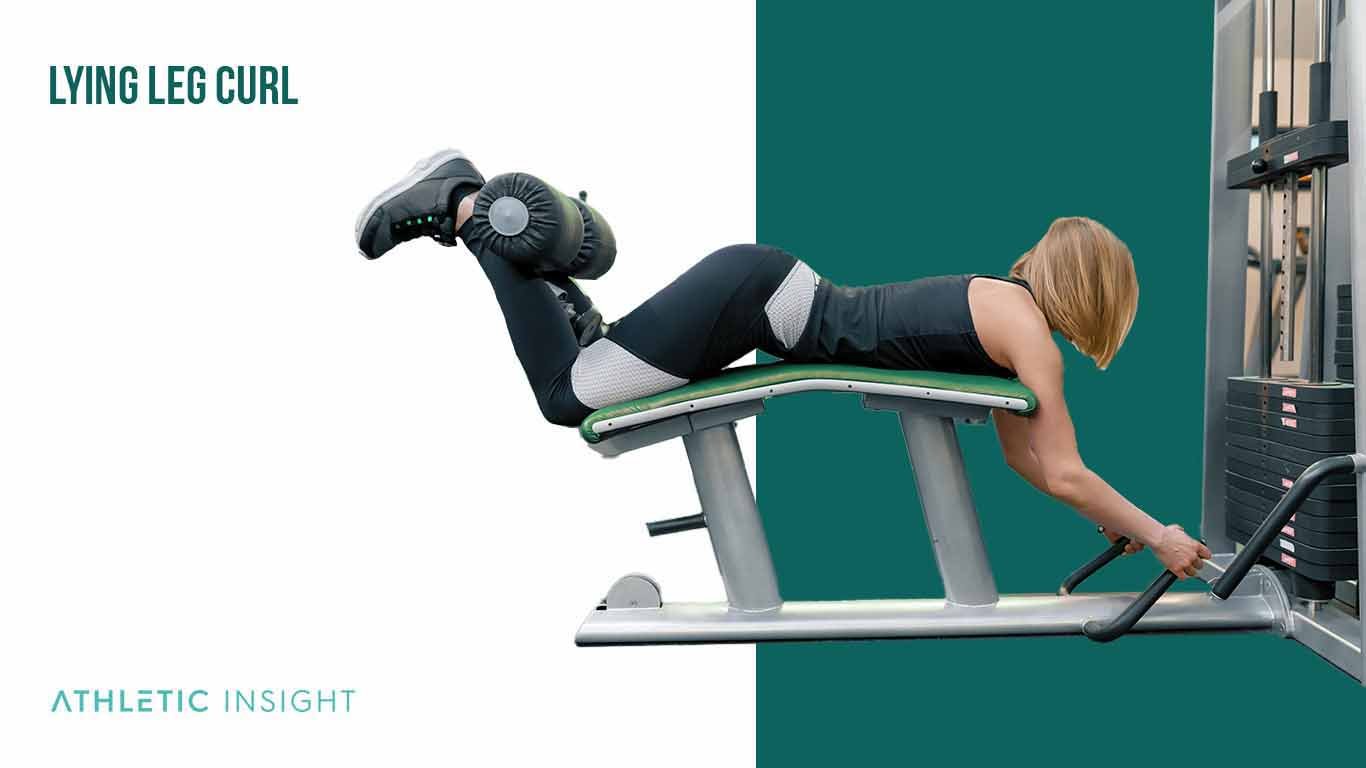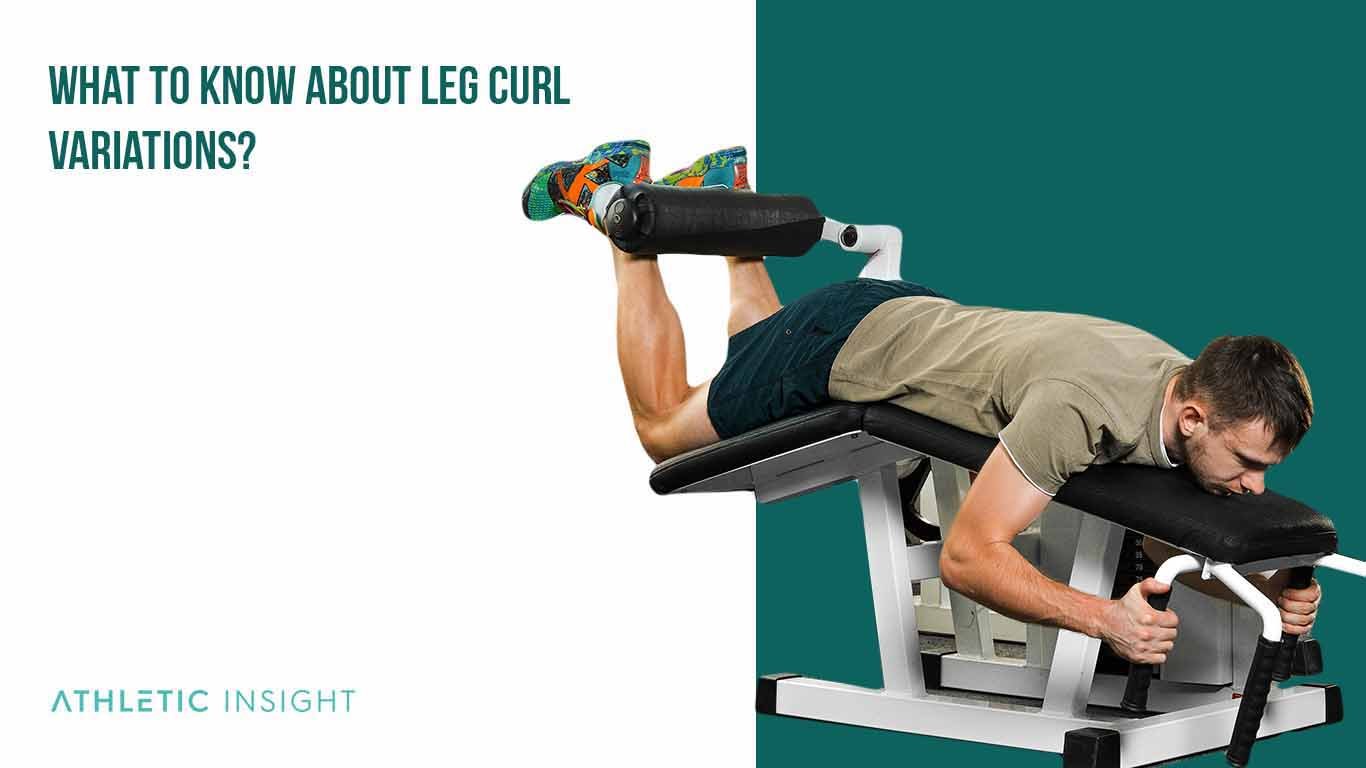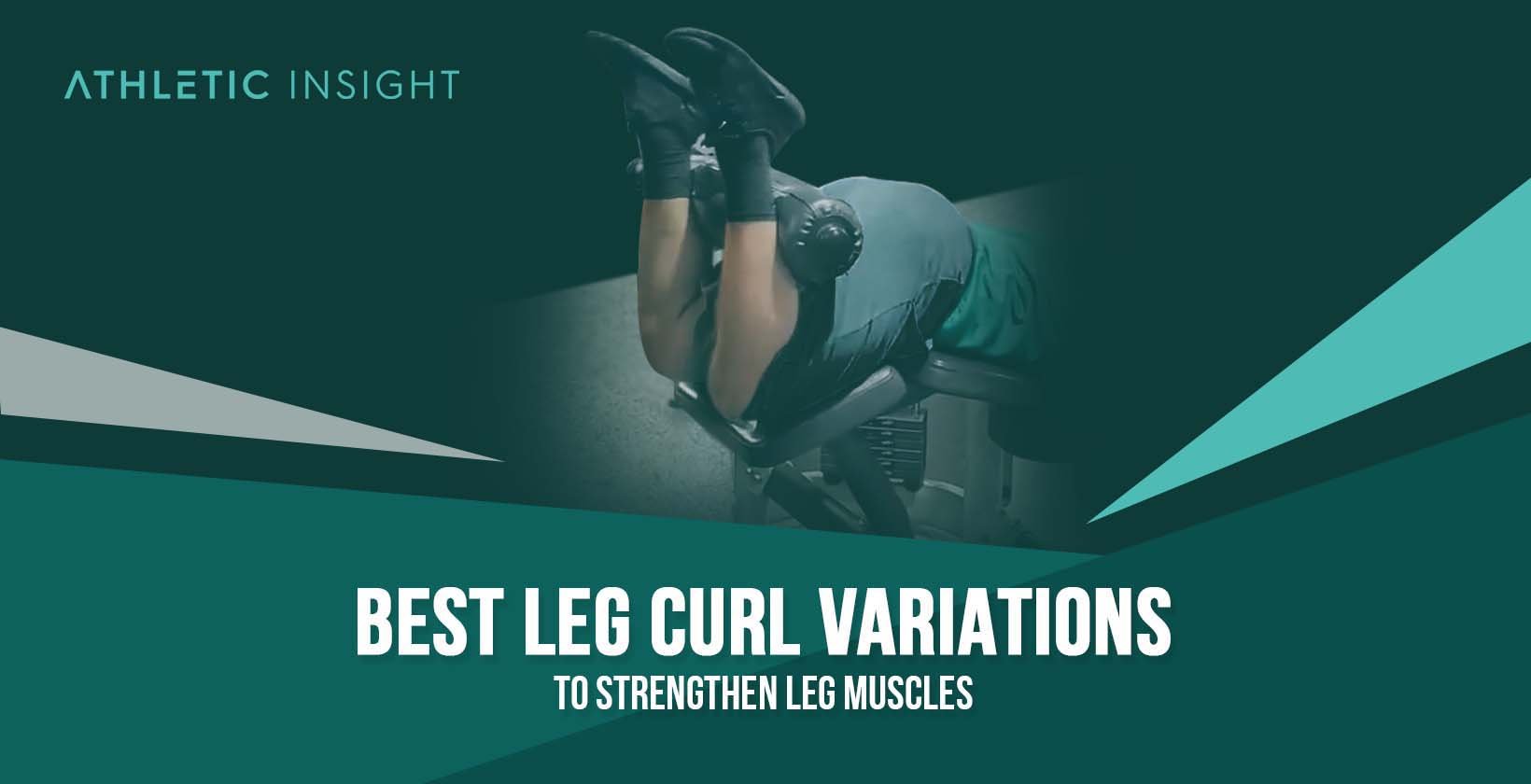A leg curl is a lower-body isolation exercise for the back of your leg. Leg curls target the hamstrings and calf muscles, which are muscles that run down the back of the leg, namely the biceps femoris muscle, semitendinosus muscle, and semimembranosus muscles.
The hamstrings are crucial for balance, stamina, and better athletic abilities. You use those muscles to do any activity that involves the legs. Legs curls help prevent injury from exercise, rough play, strenuous work, or natural causes due to aging.
Most leg curls are performed on a leg curl machine. While this is the primary method, many variations don’t require using the equipment at all. Many of these allow you to adjust the weight to make things easier or more challenging.
There are beginner-friendly options and ones proven to help reduce the chance of injury. Finding a variation is vital if someone cannot perform a leg curl properly. Beginners can try seated leg curls or lying leg curls. Advanced variations include leg curls with a dumbbell or a ball.
1. Seated Leg Curl
The seated leg curl is a variation that focuses on the hamstring muscles for athletes or anyone looking to prevent injury. It is ideal for someone with low back or neck problems or the inability to tolerate standing. Using a machine helps you control your leg position while you curl.
The seated leg curl compares to a leg curl because they work for the same muscle groups, but the user’s hamstring will be at a lengthened position with this variation.
Sit at the machine facing out with the upper pad just above the knees and the lower pad resting right below the calves. With your back against the machine and your grip on the handles, push your leg to your buttocks. Hold it in place, then repeat the series.
If you don’t have access to a gym, a seated leg curl variation is a glute bridge walkout. You’ll lie on your back and lift your hips and legs until they form a bridge. While your hips are in the air, try to walk your feet away from your body.
A common mistake with this exercise is rushing through the motion. You can avoid this by taking the movement slow to prevent injury.
This exercise is a beginner exercise because it doesn’t require much strength, to begin with.
2. Standing Leg Curl
The standing leg curls strengthen the hamstrings, buttocks, and calf muscles. The standing leg curl variation doesn’t require weights, creating less tension on the hamstrings.
The standing leg curl compares to a leg curl because it works your hamstrings and calf muscles, but one at a time.
To do this exercise, stand up straight with your feet hip-width apart. Alternating sides, bend the leg at the knee up to the buttocks and then back down. While doing these curls, you will notice your body shifts weight slightly on each side.
Here are some variations of standing leg curls. You can use a low cable machine by attaching the cable to your ankle and pulling your leg back until you meet resistance. Another option is to use a resistance band. You’ll place the band above each ankle and then lift your leg.
A common mistake with standing leg curls is not having enough resistance. Two tips for avoiding this mistake are adding more weight gradually and slowing down the movement.
This exercise is a beginner to intermediate practice because it’s easy to do but easy not to have enough resistance to be effective.
3. Lying Leg Curl
The lying leg curl works the hamstrings, calves, shins, and gluteal muscles for athletes wanting to build their lower leg muscles. Lie down on the machine with your legs extended. The leg pad should rest between the heels and calves. Hold onto the hand rests and lift your legs to the buttocks.

The lying leg curl compares to a traditional leg curl because users can strengthen their hamstrings.
A variation of this exercise is a prone lying leg curl without the machine. If you do not have access to the gym, try using exercise bands for prone leg curl variations. Lie down on your stomach, and attach one end of a band to something sturdy and the other end around your ankle. Bend your leg at the knee and pull against the band’s resistance.
Your hips and upper legs should stay on the ground at all times. For a more challenging workout, increase the band resistance. A common mistake is removing your hips from the ground. Two tips for users to prevent this mistake are practicing keeping your upper legs on the ground and performing the movement slowly.
This exercise is a beginner to intermediate workout because keeping your hips and upper legs on the ground can be difficult.
4. Nordic Hamstring Leg Curl
The Nordic leg curls work the hamstrings for users looking to prevent injuries. These variations with leg curl machines involve using the upper body to work out the lower legs.
The Nordic hamstring leg curl compares to a leg curl because it will also strengthen your hamstrings.
Place your ankles under a barbell or have someone anchor them down. Lift your upper body using your leg strength instead of your arms. Be sure to use your knees instead of your hips to make the curl more effective.
Other leg curl machine variations may include using a band in place of a machine. Attach the band to a sturdy frame above your head and hold the other end with your hands. Your ankles anchor to the lower end of the frame.
People make common mistakes when doing a nordic hamstring leg curl, like hyperextending the back and bending too much at the hips. Two tips for preventing this are to use your knees instead of your hips and to anchor your ankles down.
This exercise is an intermediate or expert skill because it’s easy to lose proper form.
5. Valslide Leg Curl
The Valslide leg curl combines hamstring exercises with hip extension and knee flexion for athletes and bodybuilders to decrease their chance of injury. You can do this variation without a machine.
The Valslide leg curl compares to a leg curl because it works your hamstrings, knee flexion, and hip extension.
Get two Valslide discs and place them under your feet. Lie on your back with your knees at 90 degrees. You’ll keep your hip in the air. You use your heels to slide the discs. Extend your legs without lowering your hips. Hold in place and return to your original position.
A common mistake with a Valslide leg curl is sliding the discs too far. Two tips for preventing this mistake are going slow and performing it on a surface that isn’t too slick.
This exercise is an intermediate to advanced exercise because it requires a lot of strength and precision not to slide the discs too far.
6. Leg Curl With a Ball
The leg curl with a ball variation exercises the hamstring muscles for athletes and others to strengthen their lower legs. Otherwise known as a Swiss Ball Hamstring Curl, it uses a stability ball instead of a sturdy stationary object.
Leg curls with a ball compare to a leg curl because they work the same muscles.
Swiss Ball Hamstring Curl is a leg curl exercise variation that focuses on the hamstring muscles and lower back, abs, and glutes for intermediate-level athletes. Swiss ball leg curl variations include stability ball hamstring curls and one-leg hamstring curls.
Here’s how to Do Exercise Ball Leg Curls Variations where you use a ball in place of a machine.
- Lie on your back with your arms on the floor, hands palm down.
- Your legs hip-width apart, place your heels and ankles on an exercise ball.
- Lifting your hips and bending your knees, roll the workout ball towards the buttocks until the sole of your foot touches the ball.
- Return your hips and back to the floor and repeat the steps several times.
A common mistake with leg curls with a ball is going too fast. Two tips for avoiding this mistake are practicing your form beforehand and moving very slowly.
This exercise is an intermediate exercise because it requires you to have complete control of the ball you use.
7. Leg Curl With a Dumbbell
The leg curl with a dumbbell is a variation that focuses on the hamstrings and lower leg muscles for users wanting to build lower leg strength and stability. You can do leg curl exercises with dumbbells to get the same results.
The leg curl with a dumbbell compares to a leg curl because you can control the amount of weight and work similar muscles.
While lying on your stomach and your arms crossed, lift your legs with a small dumbbell between your feet. The resistance from the dumbbell mimics that of a machine.
A common mistake is using too much weight. Two tips for users to prevent this are starting with a weight lower than average or using a resistance band.
This exercise is beginner-friendly because it’s simple to maintain your form.
What to Know About Leg Curl Variations?
Leg curls are the best exercises for the legs of anyone who wants to strengthen the upper thigh muscles, including the hamstrings. What you need to know about leg curl variations is that the hamstrings have two purposes: to flex the knee and extend the hip.

Different types of leg curl variations are the seated, lying, and kneeling techniques. Because there are three hamstring muscles, each variation targets them differently. It is crucial that you must work on each muscle equally to avoid any weaknesses.
What Are the Common Mistakes in Doing the Leg Curl Variations?
The common mistakes when doing leg curl variations are neglecting the hamstrings during a workout, making the curls too simple, paying less attention to negative training, adding excessive weight during leg curls, and focusing too much on one leg.
- Neglecting the hamstrings during a workout: The hamstrings are a critical muscle that often gets overlooked when working out. Not only do these muscles aid in just about every other major compound exercise, but they are also often underdeveloped compared to the other “mirror muscles”.
- Making the curls too simple: If a leg curl is too easy to perform, you should challenge yourself and make it more difficult to perform.
- Paying less attention to negative training: Negative training is an essential part of weight training and should not be overlooked.
- Adding excessive weight during leg curls: While weights can speed up the muscle-building process, adding too much weight too fast may result in major injuries and a less effective workout.
- Focusing too much on one leg: In order to maintain a well-balanced physique, it is important to exercise each leg equally, despite if you rely on one more than the other.
Which Type of Leg Curl Variation Is Beginner-Friendly?
Hamstring Curl Isometrics are some of the best beginner-friendly leg curl variations. They are a lower impact version of hamstring curls, making them perfect for someone recovering from an injury.
Hamstring curl isometrics are a leg curl variation that is good for hamstrings (posterior thighs), calves, glutes (buttocks), quads (anterior thighs), and shins.
Bridge and hip thrusts are hamstring exercises that are simple to do without a machine, as well as the glute bridge and squats.
Which Type of Leg Curl Variation Is Good for Weightlifters?
The types of leg curls suitable for weightlifters are sitting leg curls, lying leg curls, and Romanian deadlifts. The sitting hamstring exercises support your back and make breathing easier. Lying leg curls focus more on the hamstrings.
Which Type of Leg Curl Variation Is Good for Athletes?
A leg curl variation that’s good for athletes is the Nordic hamstring curl.
Which Type of Leg Curl Variation Is Good for Bodybuilders?
Seated leg curls are a leg curl variation that is good for bodybuilders.
What Are the Leg Curl Variations With Dumbbells?
Leg curl variations with dumbbells are the dumbbell lying leg curl and the dumbbell incline leg curl.
Which Leg Curl Is Better for Building Leg Muscles?
To build strong leg muscles, the standing hamstring curls tone the hamstrings and improve balance and strengthen leg muscles. The prone hamstring curl works the lower leg muscles and the hamstrings, making it another exercise to add to any leg routine.
What Are the Alternatives to Leg Curl Exercises?
If you cannot do the traditional leg curls, leg curl alternatives are just as effective in strengthening the hamstrings. Here are leg curl alternatives.
- Glute bridge walkouts
- Prone band curls
- Hamstring curl isometrics
- Romanian deadlifts



